Embarking on a family ski trip is an exciting prospect, filled with the potential for fun, adventure, and family time amidst the stunning backdrop of glistening, snow-capped peaks. If you’ve thought about planning a ski trip but don’t where to begin, fret not. We understand that organizing such an outing can be daunting for first-timers. That’s why we’ve put together eight essential aspects to consider. Designed to simplify your preparations and help you tackle the planning process with confidence, ensuring your big family’s ski experience is fun for you, the planner, too. This article is an overview of the trip planning process, we’ll delve deeper into each of these aspects in upcoming posts.
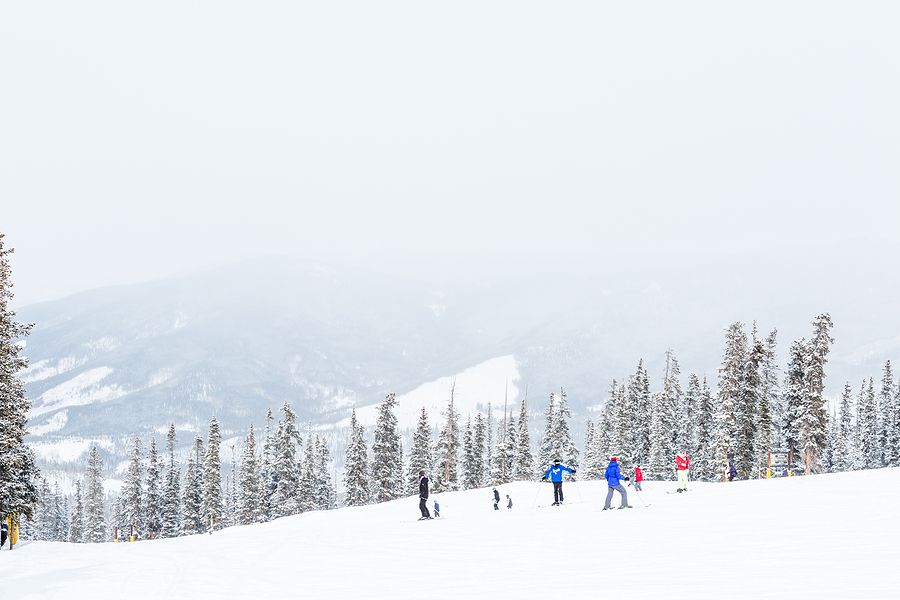
Deciding on the Perfect Ski Destination
The first step in planning your family ski trip is to select a suitable destination. Various factors come into play when deciding where to ski. These include the distance from your home, the difficulty levels of the slopes, the family-friendliness of the resort, and the size of the resort.
How to Pick the Best Ski Resort
Distance
Consider how far you’re willing to travel for your family ski trip. For first-timers, it may be more convenient to choose a destination closer to home. However, if you’re up for a bit of adventure and don’t mind the distance, there are numerous ski resorts worldwide that offer a fantastic skiing experience.
Difficulty Levels of Slopes
If you have beginners in your family, make sure to choose a resort that caters to different skill levels. A resort with a good mix of beginner, intermediate, and advanced slopes is ideal. This allows everyone in the family to enjoy skiing at their own pace and skill level.
Family-Friendliness
A family-friendly resort should not only provide suitable slopes for children but also offer childcare facilities, kid-friendly menus, and a variety of off-slope activities to keep the little ones entertained. Many resorts offer outdoor adventures such as tubing, sledding, and ice skating, which allow kids to enjoy the winter wonderland while engaging in some friendly competition and physical activity. Some resorts even have designated snow play areas where children can build snowmen, create snow angels, or participate in organized snowball fights.
Small vs Big Resorts for First-Timers
When it comes to first-time skiers, small resorts can offer a more manageable and less intimidating experience. These resorts typically have fewer and gentler slopes, which is ideal for beginners who are just getting the hang of skiing without the added pressure of navigating through crowds or dealing with complicated runs. Smaller resorts often provide a more personal touch, with staff having more time to assist and guide new skiers. Additionally, the compact nature of small resorts means everything is conveniently located, reducing the time and effort needed to move from one place to another.
On the other hand, big resorts come with their own set of advantages for novice skiers. They usually boast a wider variety of beginner-friendly terrain, professional ski schools, and more extensive facilities. Larger resorts tend to have longer runs, which can be beneficial as beginners start to improve and want to try longer distances without repeating the same short slopes. Additionally, big resorts often have more to offer in terms of après-ski activities and amenities, which can enhance the overall experience for first-timers who also want to enjoy other aspects of a ski vacation.
Recommended Family-Friendly Ski Destinations
Several ski resorts are known for their family-friendly amenities. Some top recommendations include:
- Northeast: Smugglers’ Notch Resort (Jeffersonville, Vermont): Celebrated for its top-notch children’s programs, Smugglers’ Notch offers an unbeatable family skiing experience in the Northeast.
- Midwest: Boyne Highlands (Harbor Springs, Michigan): With its quaint European charm and slopes suitable for families, Boyne Highlands stands out as the Midwest family destination.
- Rocky Mountains: Beaver Creek Resort (Avon, Colorado): Renowned for its child-specific activities and ski school, Beaver Creek is the family favorite in the Rocky Mountains.
- Pacific Northwest: Mt. Bachelor (Bend, Oregon): Boasting family-friendly terrain and a distinguished ski school, Mt. Bachelor is the Pacific Northwest’s gem for family ski trips.
- West: Northstar California Resort (Truckee, California): With a village atmosphere tailored for families and an excellent ski school, Northstar is the West’s beacon for family skiing.
- South: Snowshoe Mountain (Snowshoe, West Virginia): Known as the Southeast’s leading resort, it offers a comprehensive ski school and family programming.
If you know what state you want to ski in, see our ski resort guides by state.
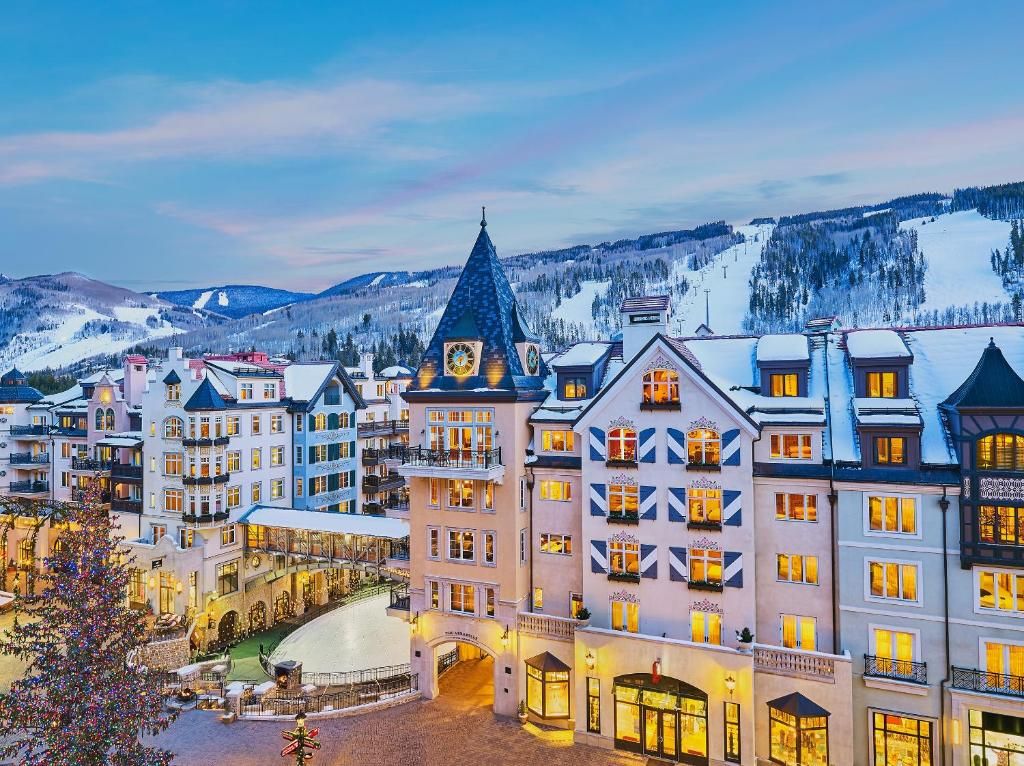
Selecting the Ideal Ski Vacation Accommodation
Choosing the right accommodation is crucial for a successful family ski trip. Whether you prefer the convenience of ski-in/ski-out resorts or the coziness of private cabins, there’s a variety of options to suit every family’s needs and budget.
Types of Accommodations
Ski Resorts
Ski resorts offer the ultimate convenience for skiing families. With direct access to the slopes, ski schools, and gear rental facilities, ski resorts provide everything you need for a hassle-free ski vacation. Many resorts also offer additional amenities such as heated pools, saunas, fitness centers, and a variety of dining options, making them an excellent choice for families. Check out our hotel listings to find big family friendly resorts.
Cabins
Renting a cabin could be the perfect option if you prefer a more private and cozy setting. Cabins offer the comfort of home, often equipped with full kitchens, multiple bedrooms, and living areas. Some even come with hot tubs and fireplaces, providing the perfect setting for relaxing after a day on the slopes.
Hotels
Hotels can be a cost-effective option, especially for those planning a short ski trip. Many hotels for big families located near ski resorts offer shuttle services to the slopes and discounted ski packages, adding extra convenience and value.
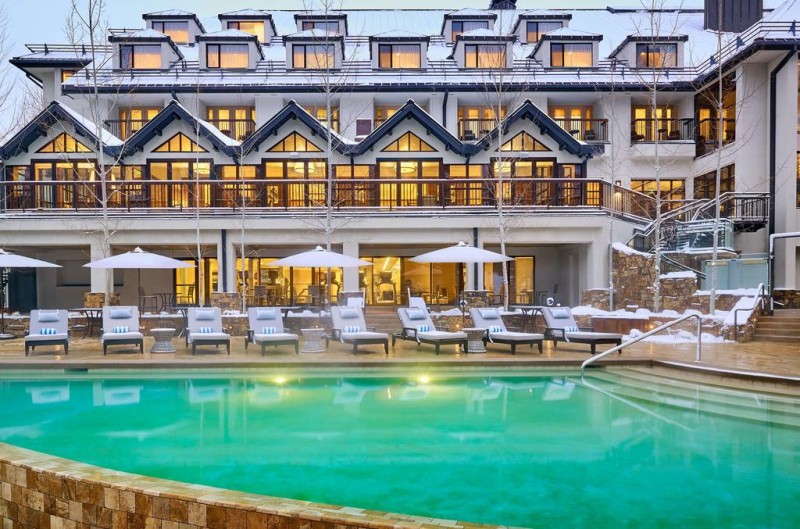
What to Look for in Family-Friendly Lodging
When selecting your accommodation, consider the following:
- Proximity to slopes: Look for accommodations that offer easy access to the slopes, ideally with ski-in/ski-out facilities.
- Amenities for kids: Check if the accommodation offers kid-friendly amenities such as games rooms, child care facilities, pools, or entertainment activities.
- Kitchen facilities: If you prefer to prepare your own meals, look for accommodations with fully equipped kitchens.
- Room configuration: Ensure the room configuration suits your family’s needs. For instance, families with young children might prefer rooms with connecting doors, while those with teenagers might opt for separate rooms.
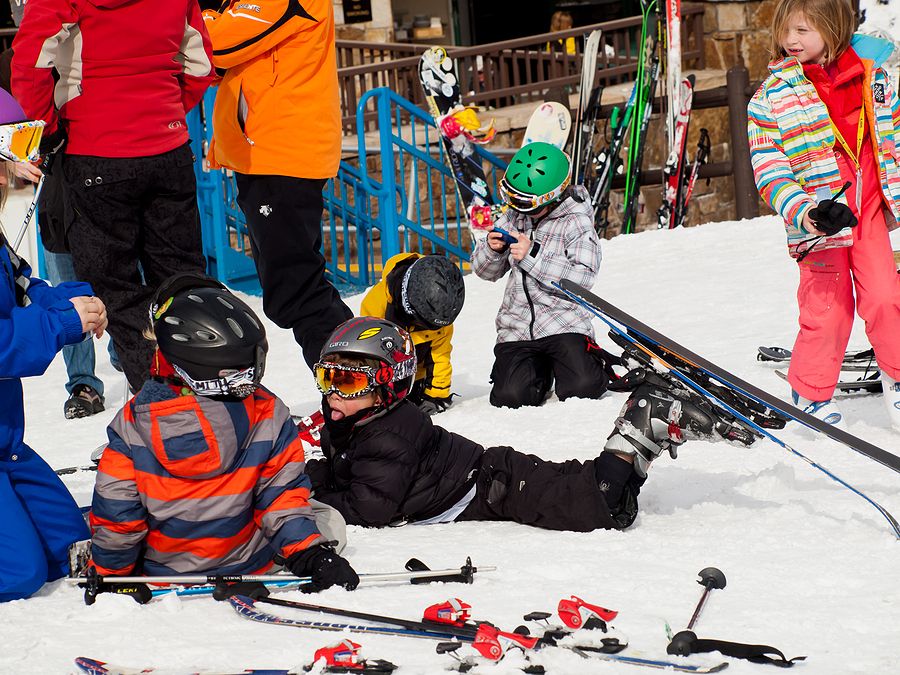
Understanding Ski Equipment and Attire
Having the right equipment and attire is crucial for a comfortable and enjoyable skiing experience. As beginners, it’s advisable to rent ski gear rather than buy it. Renting allows you to try out different types of equipment and find what suits you best before making a significant investment.
Ski Equipment Basics
For skiers, the essential gear includes downhill skis, ski boots, and poles. For snowboarders, it’s a snowboard and snowboard boots. Most resorts also rent helmets, an indispensable safety accessory.
There are two main ways to rent ski gear:
- Rent from the resort: Most resorts have an extensive range of skis, snowboards, boots, poles, and helmets. Renting directly from the resort offers the convenience of not having to transport bulky equipment.
- Rent from an outdoor store: Many outdoor shops offer ski equipment rentals. Although you’ll need to transport the gear yourself, renting from a store can sometimes be cheaper than renting from a resort.
Regardless of where you rent from, it’s advisable to reserve your equipment in advance, especially during peak season.
Essential Ski Attire
Dressing appropriately is key to staying warm and comfortable on the slopes. Here’s a rundown of the essential ski attire:
- Base layer: A synthetic or wool long-underwear top and bottom to wick sweat away from your skin.
- Middle layer: A midweight fleece top for extra warmth. On cold days, consider adding midweight fleece pants over your base layer.
- Outer layer: A waterproof jacket and pants to protect you from snow and wind.
- Gloves or mittens: Insulated gloves or mittens are essential to keep your hands warm.
- Socks: Opt for medium-weight, non-cotton socks. Ski-specific socks are ideal as they come up to just below the knee, providing extra comfort inside ski boots.
- Helmet: A helmet is crucial for safety. Most ski resorts offer helmet rentals.
- Goggles: Ski goggles protect your eyes from the sun and snow. If it’s not snowing, sunglasses are a suitable alternative.
- Neck warmer: Also known as a gaiter, a neck warmer can be pulled up over your mouth and nose to keep your face warm when riding the chairlifts.
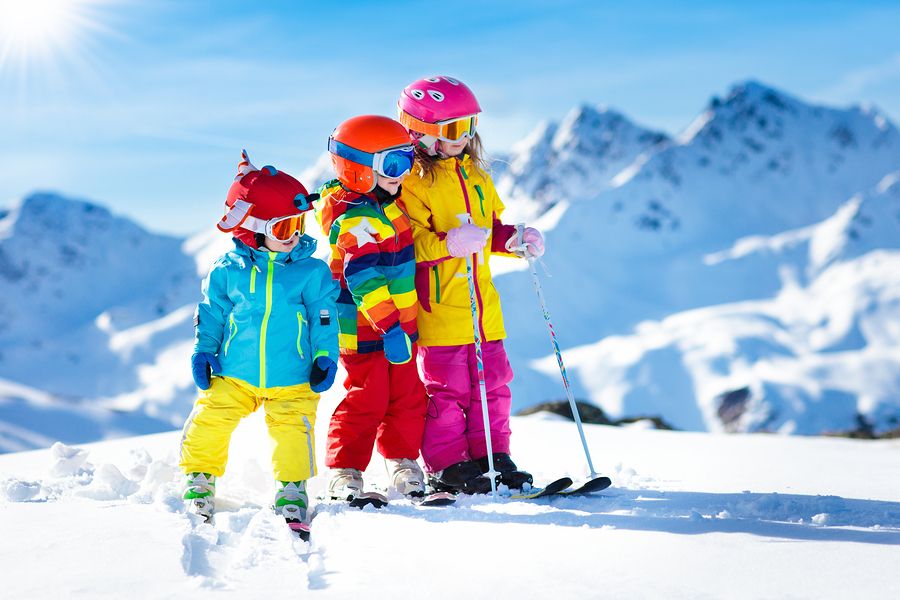
Enrolling in a Ski School: A Must for Beginners
Taking ski lessons is highly recommended, particularly for beginners. While it’s tempting to have your friends teach you, learning from certified ski instructors ensures that you’re trained in the correct techniques right from the start. Ski schools offer group lessons and private lessons, allowing you to choose what suits you best.
Group Lessons
Group lessons offer a cost-effective way to learn skiing or snowboarding. You and a group of other beginners will learn the basics of skiing, including how to put on your gear, how to get up the hill, and how to control your speed and direction when sliding down. Look for packages that bundle lessons, lift tickets, and gear rental for added value.
Private Lessons
If you prefer one-on-one instruction, consider a private lesson. While more expensive, private lessons allow for personalized instruction tailored to your children’s pace and learning style.
“Learn and Play” Programs
Some ski resorts offer “Learn and Play” programs that combine ski lessons with childcare. These programs are perfect for families with young children who may not be ready for a full day on the slopes.
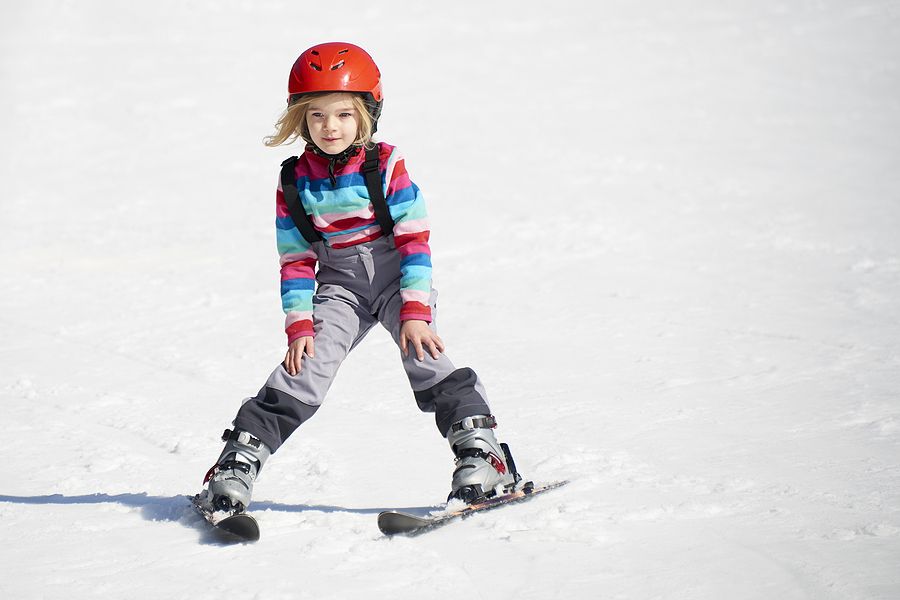
Craft Your Ski Trip Itinerary
While skiing will undoubtedly be the main event, don’t forget to plan for downtime and other activities. Balancing ski time with relaxation and exploration can enhance your family ski trip experience.
Splitting the day into hitting the slopes in the morning and engaging in other activities such as snowshoeing, ice skating, or enjoying hot cocoa by the fire pit in the afternoon ensures a well-rounded and enjoyable family ski trip experience. Balancing ski time with relaxation and exploration allows everyone to recharge and appreciate the winter wonderland from different perspectives.
Non-Ski Activities
Ski resorts often offer a range of non-ski activities to keep the whole family entertained. These might include sledding, snowshoeing, ice skating, or even indoor activities like swimming, games, or spa services. Be sure to research what your chosen resort offers and plan some downtime activities in your itinerary.
Exploring the Local Area
Taking a day off from skiing to explore the local area can also be a rewarding experience. Many ski resorts are located near family-friendly towns or natural attractions, providing a great opportunity to soak up the local culture and scenery.
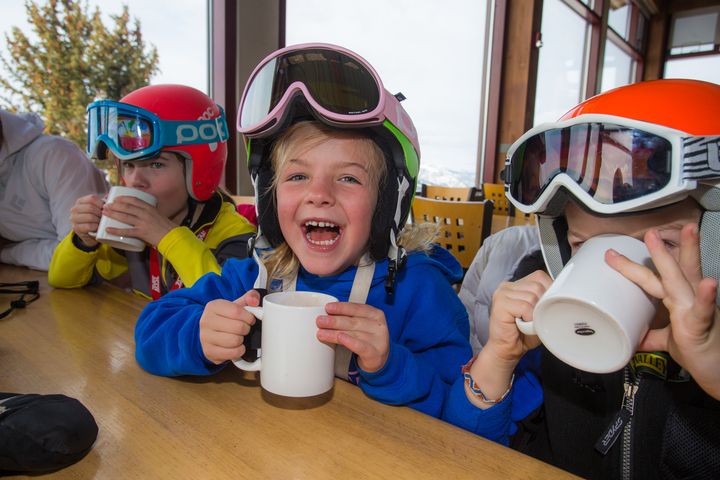
Safety First: Ensuring a Safe Ski Experience
Safety should always be a priority when planning a family ski trip. Understanding the rules of the ski resort, ensuring your equipment is in good condition, and knowing the ski trail ratings are all crucial steps in ensuring a safe ski experience.
Understanding Ski Safety Rules
Familiarize yourself and your family with the ski resort rules. These guidelines are in place to ensure everyone’s safety and enjoyment on the slopes. If you’re unsure about any of the rules, don’t hesitate to ask a resort employee for clarification.
Checking Equipment Safety
Before hitting the slopes, it’s essential to conduct a safety check of your ski equipment. Make sure your skis or snowboard are in good condition, and that your boots fit correctly. If you’re renting equipment, the rental shop will help ensure everything is properly adjusted for your size and skill level.
Knowing the Ski Trail Ratings
Ski resorts use a color-shape rating system to indicate trail difficulty. As a beginner, you’ll typically stick to the green circle (easiest) trails. Understanding these trail ratings can help you navigate the resort and avoid venturing onto trails that are beyond your skill level.
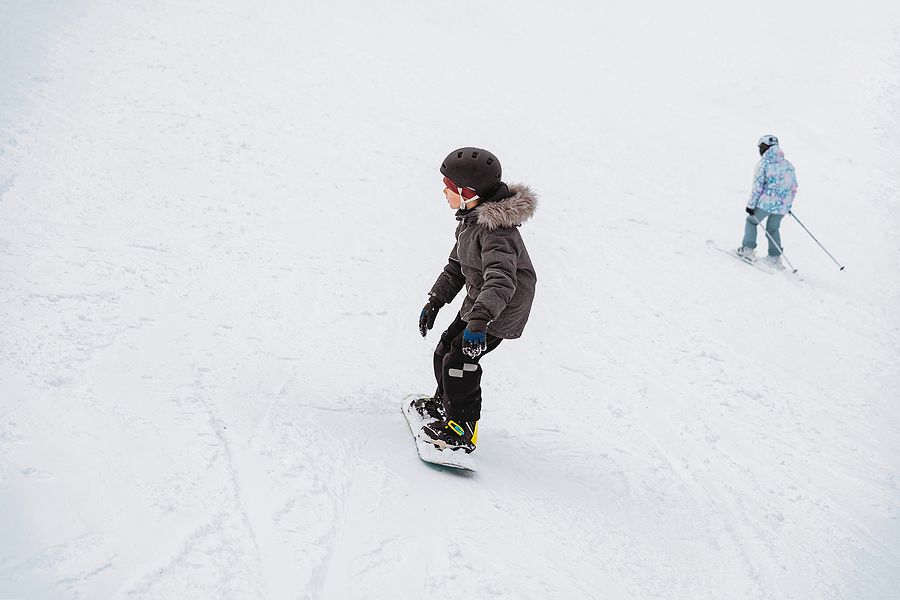
Budgeting for Your Ski Trip
A family ski trip is a significant investment, but with careful planning, it’s possible to keep costs manageable. Consider the following expenses when budgeting for your ski vacation:
- Travel: Factor in the cost of getting to and from the ski resort, whether you’re driving or flying.
- Accommodation: Costs can vary widely depending on the type of accommodation you choose.
- Equipment Rental: Include the cost of renting skis, boots, poles, and a helmet.
- Ski Passes: Lift tickets are a significant expense. Look for package deals or discounted rates during off-peak times.
- Meals: Consider whether you’ll be eating out, cooking in your accommodation, or a combination of both.
- Lessons: Factor in the cost of ski lessons
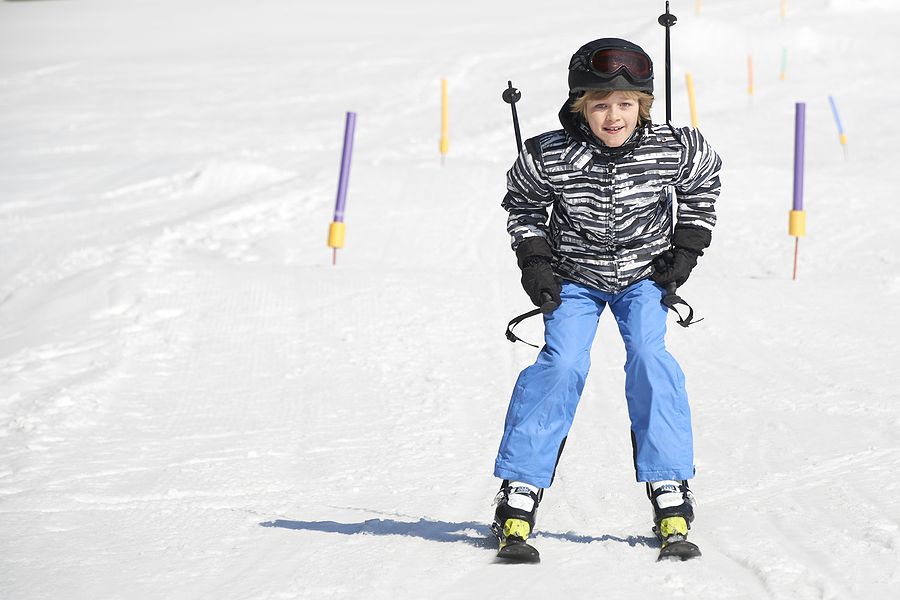
Preparing for the Ski Trip
Embarking on a ski trip can be an exhilarating adventure, but it requires careful planning and preparation to ensure a smooth and enjoyable experience. This section provides valuable insights and practical tips to help you get ready for the slopes. From packing essentials to safety measures, we’ll guide you through the necessary steps to make your ski trip memorable and stress-free. We’ll expand this section and provide a checklist in another post.
Hydration and Altitude Acclimation
Preparing your family for a ski trip requires strategic planning and attention to health, particularly hydration and altitude acclimation. Since many ski resorts are located at high altitudes, it’s crucial to prepare your body for the elevation change. Start by increasing your water intake before your trip to ensure everyone stays well-hydrated. Once you arrive, take the time to get acclimated to the elevation. This can mean resting on the first day or engaging in light activity to allow your body to adjust.
Recognize Altitude Sickness
Being aware of the signs of altitude sickness is important. Symptoms can include headaches, nausea, fatigue, and dizziness. If any family member experiences these symptoms, it’s important to descend to a lower elevation and seek medical assistance if necessary.
Packing for the Trip
When it comes to packing for your ski trip, careful preparation can make all the difference. Make a checklist of all the essentials well in advance. This should include not only warm clothing such as insulated jackets, gloves, and waterproof pants but also layers that can be easily added or removed as the temperature changes. Remember to pack plenty of sunscreen and lip balm with SPF to protect against the sun’s stronger rays at higher altitudes. Also check the specific requirements and amenities of your accommodation as they can influence what you need to pack.
Meal Planning
Meal planning is another essential aspect to consider. Preparing and packing snacks and easy-to-make meals can save time and keep your family fueled. Consider the dietary needs and preferences of each family member and plan accordingly. Bring along a mix of fresh and non-perishable items to maintain a balanced diet during the trip.
Mental Preparation
Managing expectations is key, especially for kids. Talk about what to expect on the slopes, and reassure them that it’s normal to fall and make mistakes when learning to ski. Emphasize that the most important thing is to have fun and enjoy the experience.
Planning your first family ski trip can seem daunting, but with careful planning and preparation, it can be an unforgettable experience. From choosing the right ski resort and accommodation to understanding ski equipment and attire, every aspect of your trip requires a little research. But remember, the most important thing is to enjoy the trip and create wonderful memories with your family on the slopes! So go ahead, start planning your family ski trip today, and get ready for an exciting winter adventure!
